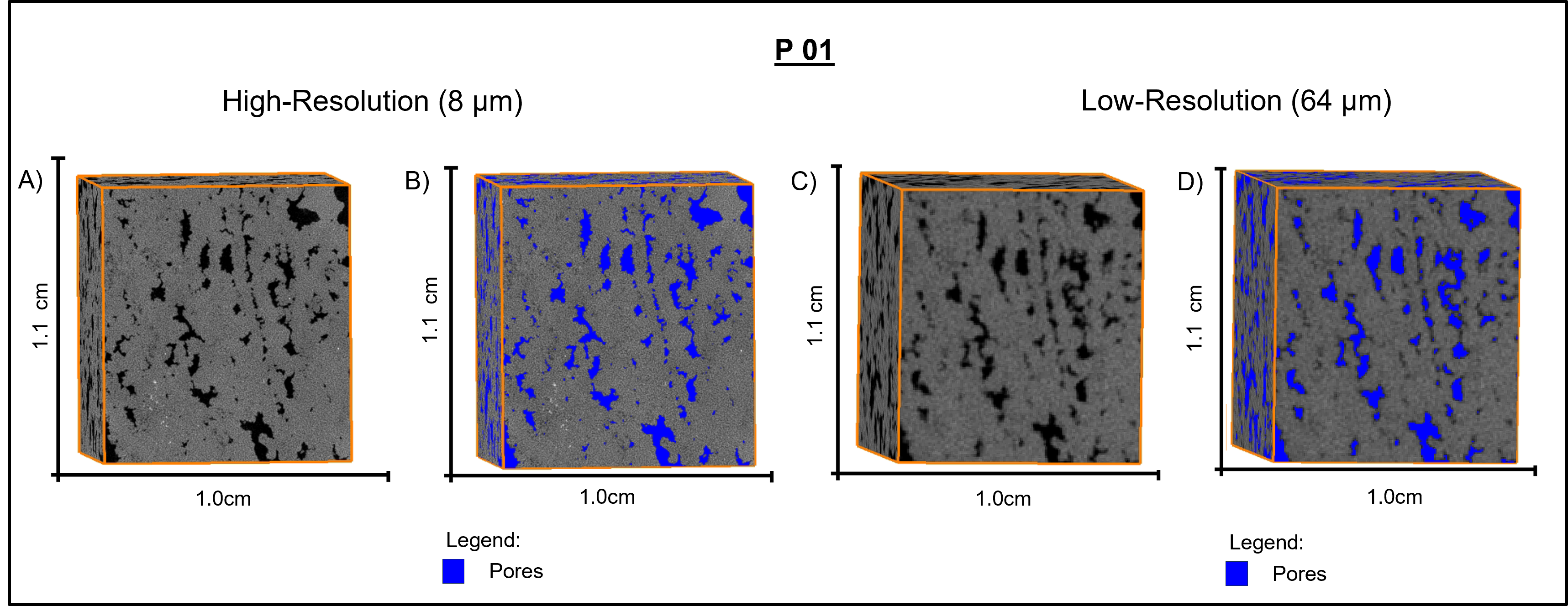
The database consists of a total of 16 samples of carbonate rocks from the Brazilian Pre-Salt. The samples come in two distinct sizes: those with a 2.54 centimeters in diameter correspond to sidewall samples, while those with a 3.81 centimeters in diameter are represented by plugs. In this database, each sample has two different resolutions: high and low. For the sidewall samples, the high resolution is 6 micrometers (µm) and the low resolution is 48 µm. For the plug samples, the high resolution is 8 µm, while the low resolution is 64 µm. The database comprises grayscale images that have been processed, filtered to reduce artifacts, registered, and cropped. Additionally, it includes segmented files obtained through the Otsu and Watershed methods, enabling a detailed and accurate analysis of sample characteristics. Thus, the dataset consists of a total of 32 grayscale image files. With the inclusion of segmented images, the dataset expands to a total of 64 files, where each original image has a corresponding segmented version into pore and matrix, totaling 32 additional files. All the rocks were acquired using the Ge X-ray emission microtomography equipment, model VTomex M. These microtomography scans were acquired at low resolution (48 and 64 µm) with the following the parameters: energy (150 kV), current (250 µA), average (3), skip (1) and filter (0,15 mmCu). And high resolution (6 and 8 µm) with the following the parameters: energy (140 kV), current (140 µA), average (6), skip (1) and filter (0,15 mmCu). This dataset offers a wide range of petrophysical, geological, and artificial intelligence applications. Among the petrophysical applications, highlights include porosity and permeability analysis, characterization of rock connectivity and heterogeneity, and simulations of more advanced properties on high-resolution images, such as acoustics, wettability, and relative permeability. For geology, high-resolution images are particularly useful for investigating the diagenetic processes that impact the rock over time, such as cementation and mineral dissolution. The images allow for a three-dimensional visualization of the texture and internal structure of rocks, facilitating the analysis of mineral distribution, fractures, and heterogeneities. On the other hand, low-resolution images serve the purpose of providing information about the overall distribution of these minerals and components over a broader area. Artificial intelligence further enhances the utility of the dataset through various applications. Image classification algorithms can automatically categorize rock samples based on their resolution and segmentation into pore and matrix files, streamlining dataset organization and analysis.
Alyne Vidal (Universidade Federal do Rio de Janeiro)
May 21, 2024
ODC-BY 1.0
10.17612/xr50-s717
The downloadable archive contains all project data; the size of the archive file for this project is 112.06 GB.
Download